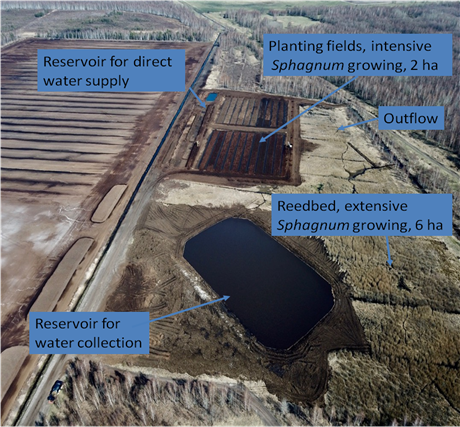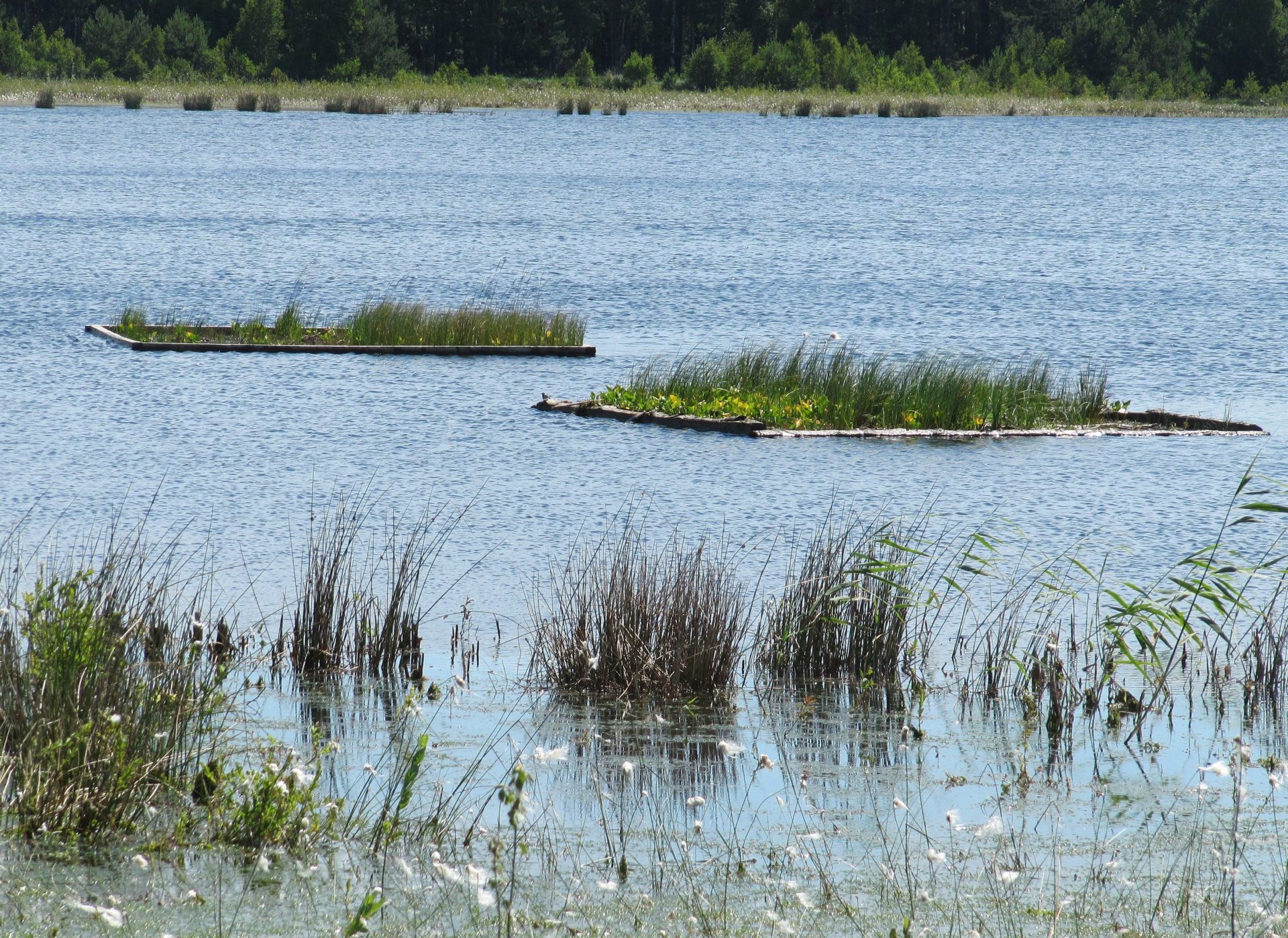On May 2019, LIFE Peat Restore presented a poster at the Annual Convention of the International Peatland Society, about specific peat forming vegetation techniques implemented on bare peat surfaces and water bodies. An important aspect of LIFE Peat Restore is to test various methods of establishing peat forming vegetation on peatland areas that have been heavily exploited in the past.
On the exploited part of the Auskstmala mining site in Lithuania, Lithuanian Fund for Nature (LFN) will test different approaches of Sphagnum spreading on bare peat to stimulate faster regeneration of peat forming vegetation. The start of this activity was recently postponed due to excessively dry weather conditions; but as soon as the weather allows it, LFN will go to the field.
Also, sphagnum reintroduction by application of sphagnum farming method will be carried out on two further project sites in Lithuania, where peatlands were abandoned and natural peat forming vegetation is not regenerating itself, due to heavy impact caused by drainage.

In Poland, the project partner, Klub Przyrodników (KP), is testing out different approaches to establishing peat forming vegetation on large post-extraction water bodies. Wind exposure prevents the establishment of peat forming vegetation. Under such conditions, it is assumed greenhouse gas emissions remain significantly and consistently high. Therefore, various measures are being tested to create better growth conditions by triggering overgrowing on surfaces of water bodies.

Klub Przyrodników is testing different material for the floating islands. They have discovered that islands built with PCV pipers filled with air and sealed at both sides are more effective. The islands built without such PCV containers are sinking and the vegetation will likely not survive under constant submersion. Last year, new test islands were constructed with updated material: cork mats as displacement medium and coconut mat as island padding. To know more about these actions, please contact the national coordinators (Lithuania and Poland).



